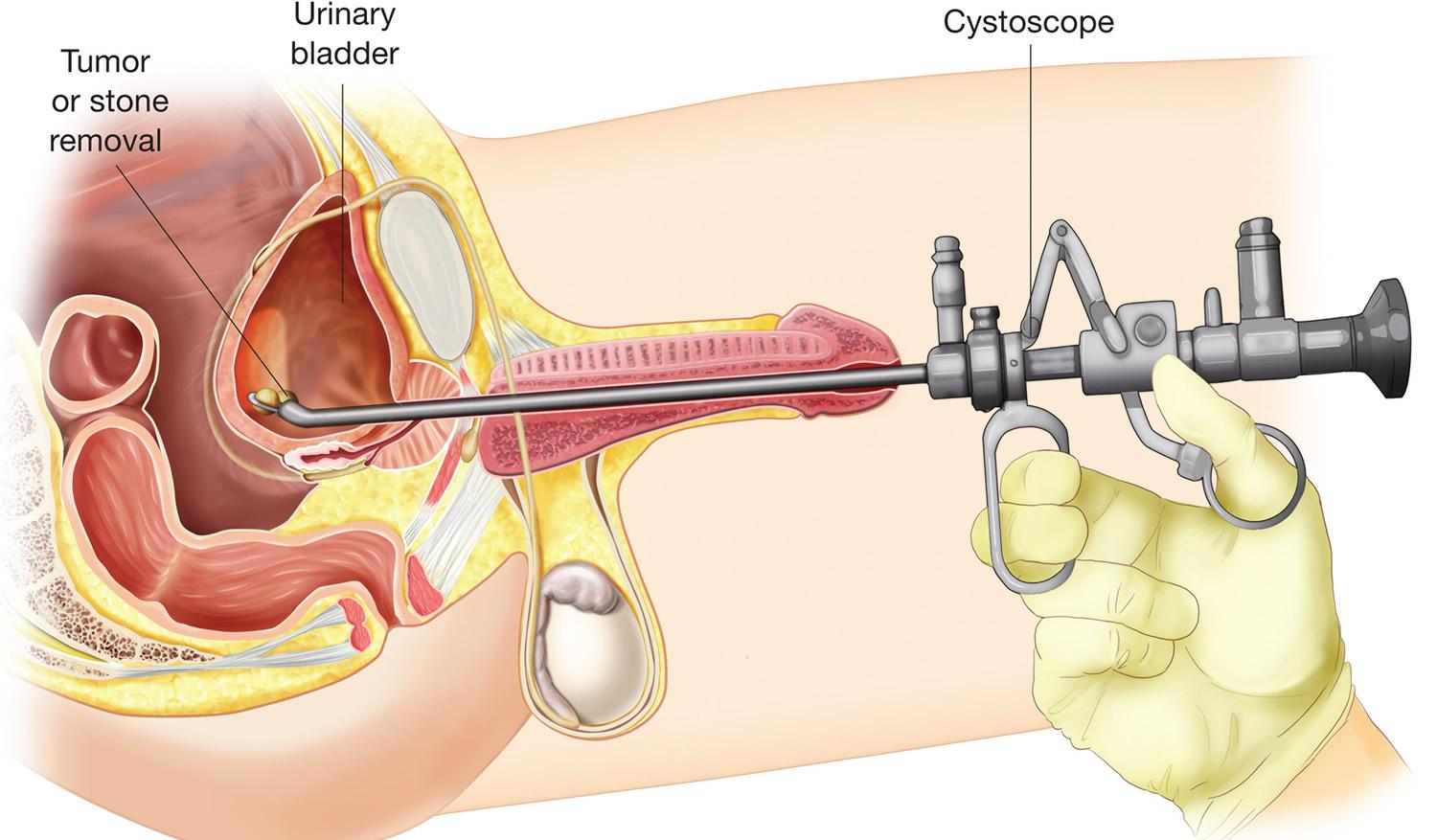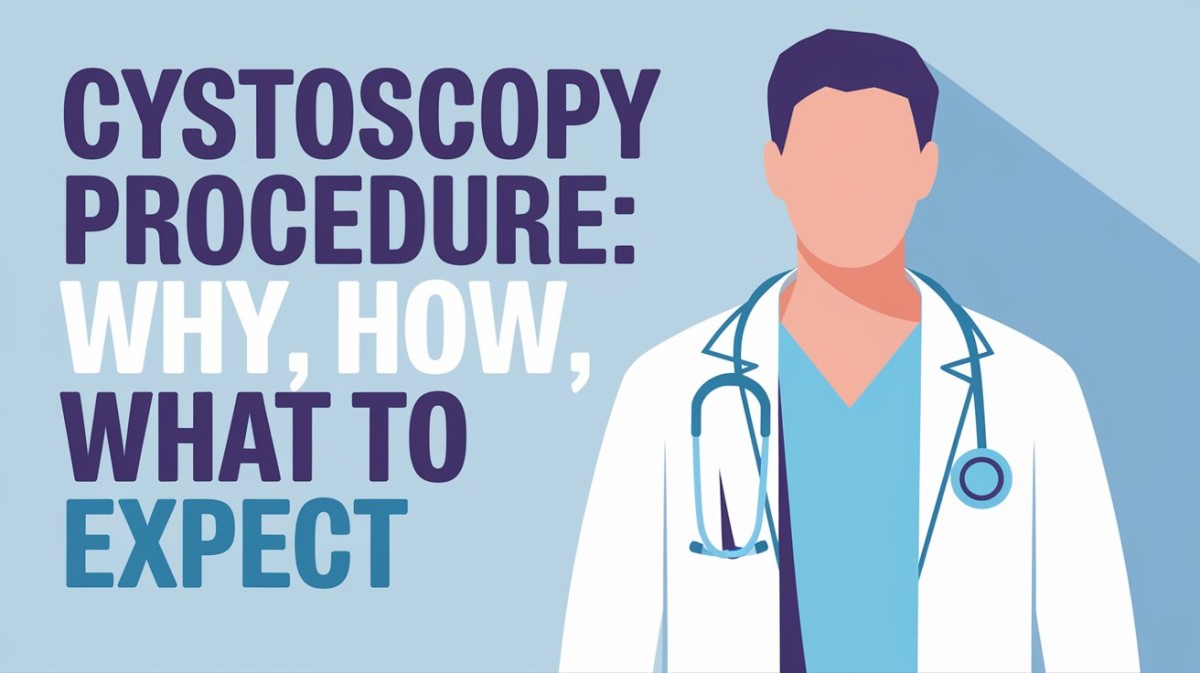Did your doctor suggest you have a cystoscopy?
Arent you sure about what a cystoscopy is?
No worries! We are here to help you out with this. Cystoscopy is a common procedure used by urologists to diagnose and treat profuse urinary tract concerns. In cases where people come across a variety of symptoms, such as painful urination, urinary incontinence, blood in urine, or difficulty in urination, a cystoscopy is recommended. So you might have a few queries, such as why cystoscopy is done, how it is performed, and whether it is safe. Beginning with
What is a Cystoscopy?
 Starting with the definition, cystoscopy is a medical examination where a thin, flexible or rigid scope with a light and camera (cystoscope) is passed through the urethra into the bladder. Physicians perform it to take a close look at any abnormality in the urinary tract, whether it is stones, tumors, or any form of structural abnormalities.
Starting with the definition, cystoscopy is a medical examination where a thin, flexible or rigid scope with a light and camera (cystoscope) is passed through the urethra into the bladder. Physicians perform it to take a close look at any abnormality in the urinary tract, whether it is stones, tumors, or any form of structural abnormalities.
Why is Cystoscopy Performed?
As already stated, cystoscopy is performed for many diagnostic as well as therapeutic purposes, including:
Diagnosis of Urinary Problems: Having a cystoscopy enables you to advocate or determine the reasons for symptoms such as recurrent urinary tract infections (UTIs), hematuria (blood in the urine), urinary incontinence, and painful urination.
Bladder Cancer Detection: Followed by doctors can also use cystoscopy to detect and monitor bladder cancer by identifying abnormal tissue growth.
Also read - Bladder Cancer: Early Signs, Risk Factors, and Treatment Approaches.
Evaluation of Urinary Tract Blockages: Conditions such as urethral strictures or bladder stones can be assessed and treated by undergoing a cystoscopy.
Treatment of Bladder Disorders: This is for people who went through treatments such as stone extraction, tissue biopsy, or any installation of direct medications into the bladder.
Monitoring for Post-Surgical Healing: Patients who have received surgery for the bladder or the urethra might need regular cystoscopies to evaluate for complications or disease return.
Types of Cystoscopy
Two varieties of cystoscopes exist:
 Flexible Cystoscopy: It employs a flexible, thinner tube, usually done in an outpatient environment under local anesthesia.
Flexible Cystoscopy: It employs a flexible, thinner tube, usually done in an outpatient environment under local anesthesia.
Rigid Cystoscopy: With rigid cystoscopy, physicians employ a more rigid scope, offering better images, and are often under general or spinal anesthesia for therapeutic procedures.
How Cystoscopy is Performed
To ensure a smooth and effective cystoscopy, patients need to make sure to stay hydrated to keep the urinary tract clear, empty the bladder(because a few procedures require an empty bladder before examination), discuss medications(if you are using blood thinners or medications which affect urinary tract should be reviewed with the doctor), take antibiotics if necessary.
Step-by-Step Procedure
The procedure typically follows these steps:
Preparation: Initially, the patient is asked to lie down, and the urethral area is cleaned to minimize infection risk as a step of preparation.
Anesthesia Administration: Next step of this cystoscopic procedure is local anesthesia, it is applied to the urethra for flexible cystoscopy, while rigid cystoscopy often requires general or spinal anesthesia.
Insertion of the Cystoscope: And then the cystoscope is gently inserted through the urethra into the bladder.
Bladder Examination: This examination uses sterile water or saline to expand the bladder for a clearer view, and the doctor inspects for abnormalities if present.
Biopsy or Treatment (if necessary): Biopsy is a process that is performed relying on the condition where small instruments are processed via the cystoscope to bring out the tissue samples or any type of unusual growth inside. Once the examination is finished, the cystoscope is withdrawn from the urethra.
Is Cystoscopy Safe?
Although cystoscopy is safe, there are potential risks and complications associated in rare cases; they may include:
Urinary tract infections (UTIs) – You may get prescribed antibiotics to reduce this risk.
Urethral injury or strictures – In rare cases, the urethra may become irritated or narrowed after a cystoscopy.
Bleeding: Bleeding in the sense you might experience minor bleeding or pinkish urine after undergoing cystoscopy.
Pain and Discomfort: Mild burning sensations during urination are common for about one or two days.
Bladder Perforation (Rare): In rare cases, the procedure may cause injury to the bladder wall.
You need to consult with your health care provider if you experience any uncommon symptoms for long, such as severe pain or discomfort, heavy blood in the urine (clots or dark red urine), high fever or chills (possible infection), difficulty urinating or complete inability to urinate.
Recovery and Aftercare
Once cystoscopy is done, patients can resume their regular activities in one or two days. Following are some of the steps that you can take care of:
 ✅ Drink plenty of water to flush out any irritants in the bladder.
✅ Drink plenty of water to flush out any irritants in the bladder.
✅ To alleviate any sort of discomfort take medications as prescribed by your doctor.
✅ You can apply a warm compress to the lower abdomen that can help you alleviate minor cramping.
✅ Stay away from strenuous activities for 24 hours.
✅ Avoid sexual intercourse for a few days if instructed by your doctor.
Read more on - Urological Concerns
Conclusion
If you were advocated for a cystoscopy by your doctor, this is all you need to understand before undergoing the process. It is a tool that is employed to diagnose and treat variable urinary tract conditions. You might experience temporary discomfort, but it is generally safe and effective. Proper preparation and following accurate guidelines will help you minimize the risks associated with cystoscopy. If you have symptoms related to bladder or urinary health, consult a healthcare provider to determine if cystoscopy is right for you.
